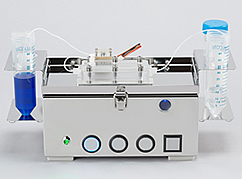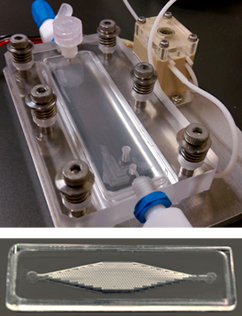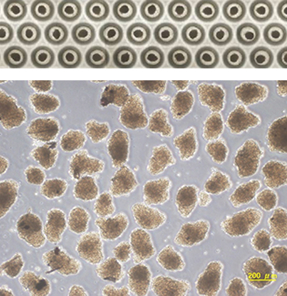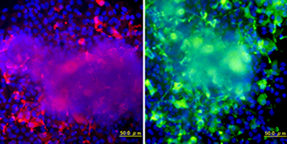Color Trading Sp. z o. o. Indonesia site
- English
Please select your Region.
Please select your Region.
Mar 09, 2016
Insulin, which is the only hormone lowering the glucose level in the human body, is generated and secreted only by islet cells inside the pancreas and is released as the glucose level increases. When the insulin secretion is depleted due to damaged incurred by islet cells, chronic hyperglycemia (diabetes) occurs which could result in complications such as kidney failure, retinopathy and peripheral neuropathy. As damaged islet cells are not reproducible, transplant treatment of the pancreas and islet cells has been conducted. However, the deficiency of donors has been a serious problem and has hindered the progress of transplant treatment. There are high hopes towards regenerative medicine as a solution, through which islet cells are artificially generated from human iPS/ES cells. On the other hand, a healthy human body has supposedly 1 million islet cells and we need to address the challenge as to how to generate a sufficient number of islet cells for transplant treatment and how to develop a method of generating even quality. Under such circumstances, ARKRAY, Inc. (hereafter, ARKRAY) examined a simple method to safely culture high quality iPS cells and succeeded in developing channel type ultra small equipment for culturing human iPS cell from a single cell in 2014.
ARKRAY, Inc. has successfully developed a new micro-channel type culture system for human iPS cells to generate islet cells from human iPS cells. In addition it was recognized that the generated islet cells are capable of maintaining the insulin secretion function based upon the glucose concentration just like islet cells in the human body.
This system has the following features in comparison to conventional methods using culture dishes and large culture instruments.
◯ Freedom in placement with battery operation
◯ The dedicated program allows the scheduled control of the pump operation for the culture/waste solution replacement which frees people from the daily culture medium replacement.
◯ Allows the long-term culture preservation inside the channel device*2
◯ Applicable to cell response analysis
This system allows us to physically control the culture environment and therefore the culture scale can easily be expanded by generating a multiple number of the same structures. Currently a culture system with automated culture replacement, temperature control and CO2 concentration control is under development, which will be further investigated for the possible application to cell types other than islet cells, in addition to the expansion and the automation of the system. ARKRAY will continuously contribute to the availability of cutting edge medicine and the improvement of patient QOL.
*1 Endocrine tissues which work to adjust the glucose value in the pancreas are called islet cells. A hormone (glucagon) which increases the glucose level is secreted from ![]() cells and a hormone (insulin) which lowers the glucose level is secreted from b βcells.
cells and a hormone (insulin) which lowers the glucose level is secreted from b βcells.
*2 Clear & transparent dimethicone (PDMS) channel structure with multiple micro-well structures placed at the bottom. The disseminated cells form an aggregate in the well and are securely maintained during the culture period of approximately one month.




![]()